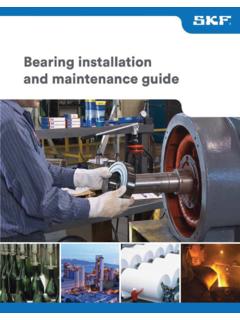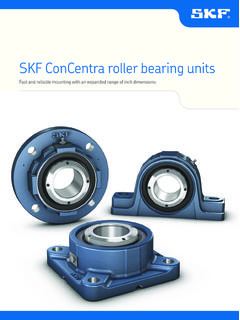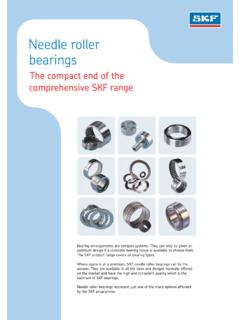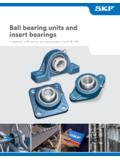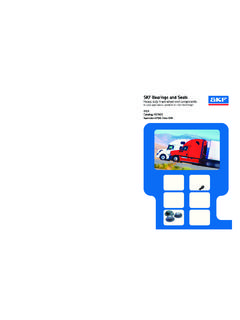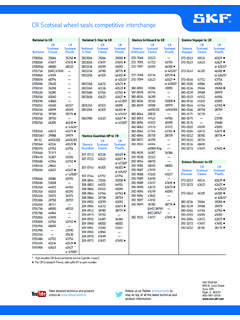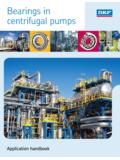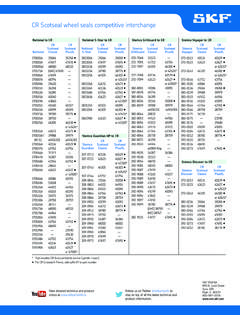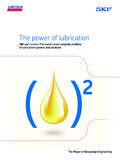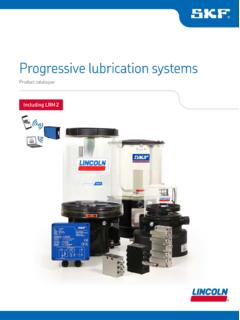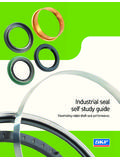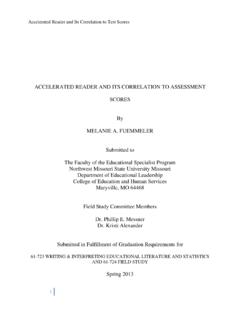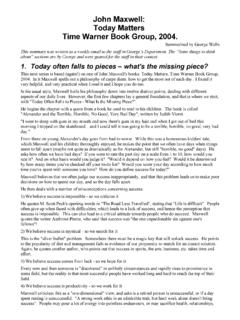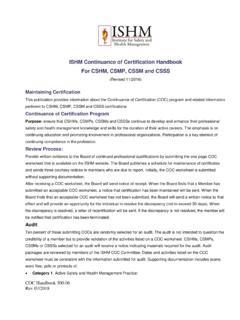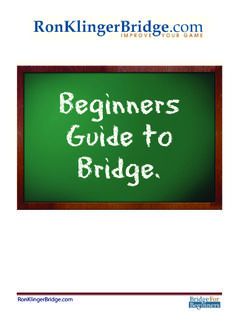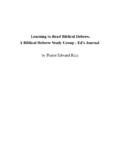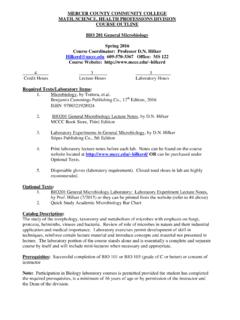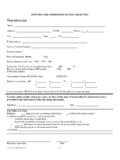Transcription of Bearing self study guide - SKF.com
1 Bearing self study guideExpanding your knowledge of bearings and related components.$ of contentsIntroduction .. 2 chapter 1 History of bearings ..3 The parts of a 3 Review .. 5 chapter 2 The Bearing ..7 Review .. 9 chapter 3 Operation conditions ..11 Internal Bearing clearance ..11 Shaft and housing conditions ..12 Review ..14 chapter 4 Roller Bearing types ..16 Tapered roller Bearing ..16 Cylindrical roller Bearing ..17 Needle roller Bearing ..18 Review ..19 chapter 5 Ball Bearing types ..21 Single row ball Bearing ..22 Angular contact ball row ball Bearing ..23 Ball thrust ..23 Review ..24 chapter 6 Hub units ..26 Hub installation guide ..27 Review ..31 chapter 7 Bearing removal & removal ..33 Cleaning bearings ..35 Review ..36 chapter 8 Installation ..38 Pre-installation ..38 Press fitting, mounting ..39 Clutch release Bearing : Special mounting procedures.
2 40 Installation checklist ..41 Review ..42 chapter 9 Bearing ..46 chapter 10 Bearing lubrication ..48 Lubrication selection ..49 Grease lubrication ..50 General recommendations ..51 Review ..52 chapter 11 Bearing maintenance ..54 Review ..56 chapter 12 Troubleshooting ..58 Brinelling ..58 Contamination ..59 Fretting ..59 Peeling ..60 Spalling ..60 Misalignment ..61 Electric Arcing ..62 Seizing ..62 Review ..64 Glossary of terms ..66 This book, produced for use by SKF distributors and customers, should prove of practical value to mechanics, maintenance superintendents and anyone who can benefit from a thorough understanding of roller and ball bearings. It will explain: How to remove, inspect, and install bearings; How to improve performance with proper lubricationand maintenance techniques; How to spot Bearing failures, correct them andprevent them from happening self- study guide is programmed to increase performance productivity.
3 Each chapter consists of a logical organization of material, technical diagrams and a short quiz to help you retain what you to use this study guideStart by carefully reading the text portion of each chapter . Make notes or underline if you wish; this can help you remember what you ve at your own pace. Nobody is going to grade or score the chapter chapter quizzes are an important phase in self- study learning since they are intended to reinforce the material covered. The quiz questions are straightforward multiple choice and true and false. There are no trick questions. Your answers can easily be checked within the context of the chapter . Answer the questions at the end of each chapter before moving on. If you are unsure about an answer to a question, check in the chapter and review that portion again. 2 Introduction3 History of bearingsFor centuries, man had to rely on his own power to push or pull large objects over the earth.
4 The concept of a Bearing to lessen friction between an object and the surface over which it is moved is nearly as old as man first solution to relieving some of this sliding friction was recorded as early as 3,500 It was then that Mesopotamians were using one of the first bearings known to man, an invention called the wheel. Where the wheel and axle touched, they put a Bearing made of leather or wood and lubricated it with animal fat. Ancient drawings from 1,100 show the Assyrians and Babylonians moving huge rocks for their monuments and palaces with rollers, illustrating the basic Bearing principle to lessen friction. But this was sliding not rolling friction. The roller and ball bearings of today may bear little resemblance to their predecessors but the concept has remained the same: to lessen friction. Today, bearings are used in almost every imaginable application, such as roller skates and bicycles, where two surfaces are turning or moving against each other.
5 They are used in thousands of ways, from the minute internal workings of a clock to large turbine engines in a ship. The bearings with which we are concerned fit two basic categories ball and roller. We will discuss both categories, and cover Bearing types, installation, operating conditions, maintenance and troubleshooting. In addition, we will feature one particular type the tapered roller Bearing which has numerous fleet applications. The parts of a bearingA Bearing s smooth performance is assured by a combination of four basic working parts (fig. 1): Outer race (also called outer ring or cup) Inner race (also called inner ring or cone) Rolling elements (either balls or rollers) Separator (also called cage or retainer)The outer race, or cup, is the Bearing s exterior ring.
6 Since it protects the Bearing s internal parts, it must be machined smoothly and accurately. The inner race, or cone, is the part of the Bearing that sits directly on the shaft. Bearing parts (fig. 1) 14 The rolling elements, shaped as balls or rollers, provide the cushion that eases the moving friction of the shaft within its housing. These elements keep the outer and inner races separated and enable them to move smoothly and freely. The shape of the rolling elements depends on the type of load, operating conditions and particular applications. It is the rolling elements that distinguish the two basic Bearing categories ball bearings and roller bearings. There is a groove called the ball path on both the inner and outer races of ball bearings in which the balls roll. For roller bearings, the rollers roll on the flat surface of each race. This surface is called the roller path.
7 Finally, the separator is a metal retainer that holds the balls or rollers. Positioned between the inner and outer races, the separator keeps the rolling elements evenly spaced (fig. 2). Ball bearingThe most popular type of ball Bearing has a single row of balls. In addition to the single row design, there also are double row, angular contact and ball thrust bearings. The characteristics and uses of each type will be covered in chapter Five. Roller bearingOne variation of roller bearings the tapered roller is used extensively for fleet, automotive and other vehicular applications. Its construction differs significantly from ball bearings and other types of roller bearings. The rolling elements and both races slant inward, much like a cone. If you extend a line along the surface of the races and rollers, and also draw one through the Bearing s axis, those lines would all meet at a common point (fig.)
8 3). Those same lines along the surfaces of ball or cylindrical roller bearings are parallel. The advantage of this design is that the tapered rollers have a positive alignment with the shaft. That is, each roller will align itself perfectly on the tapered faces of the cup (outer race) and cone (inner race).In addition to tapered roller bearings, there are a number of other roller Bearing types including cylindrical and needle bearings. The characteristics and uses of each type will be detailed in chapter Four. Ball Bearing components(fig. 2) In a tapered roller Bearing , all center lines converge at a common point. (fig. 3)5 chapter 1 ReviewTo take this test simply place a card or sheet of paper under the first question. After you ve read it (and answered it to yourself), slide the paper down below the next question. The correct answer to the first problem will appear directly to the right of the new question.
9 Be sure not to skip any of the questions. This learning technique assures more than four times the normal retention rate for even this technical subject. 1. The Bearing s smooth performance is assured by the _____. N A. inner and outer race N B. rolling elements N C. separator N D. all of the above 1. D2. The _____ is the part of the Bearing that sits directly on the shaft. N A. outer race N B. inner race N C. cage N D. cup 2. B3. The cone is another name for the _____. N A. separator N B. inner race N C. cup N D. retainer 3. B4. The outer race _____. N A. is the Bearing s exterior ring N B. protects the bearings internal parts N C. must be machined smoothly and accurately N D. all of the above 4. D5. The _____ is a metal retainer that keeps the rolling elements evenly spaced. N A. seal N B. separator N C.
10 Bearing N D. outer race 5. B6. The rolling elements consist of _____. N A. balls or rollers N B. retainer or cage N C. ring or cup N D. ring or cone 6. A167. The shape of the rolling elements depends on the _____. N A. type of load N B. operating conditions N C. particular applications N D. all of the above 7. D8. The most popular type of ball Bearing has a triple row of balls. N Tr u e N False 8. F9. The concept of a Bearing is to lessen the friction between an object and the surface over which it is moved. N Tr u e N False 9. T10. One variation of roller bearings the tapered roller is used extensively in fleet, automotive and other vehicular applications. N Tr u e N False 10. T11. The rolling elements distinguish the two basic Bearing types ball bearings and roller bearings. N Tr u e N False 11. T12. In a tapered roller Bearing , the center lines do not converge at a common point.
